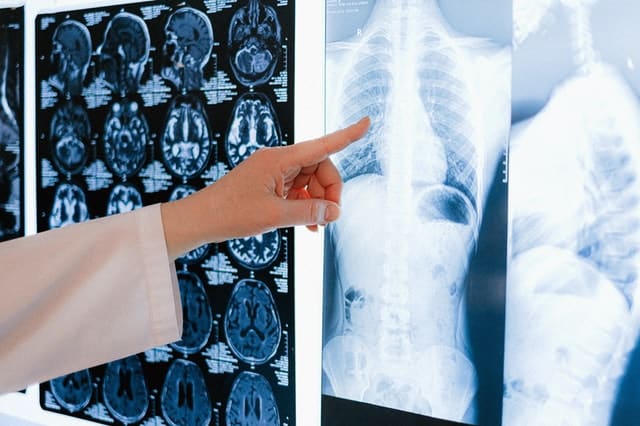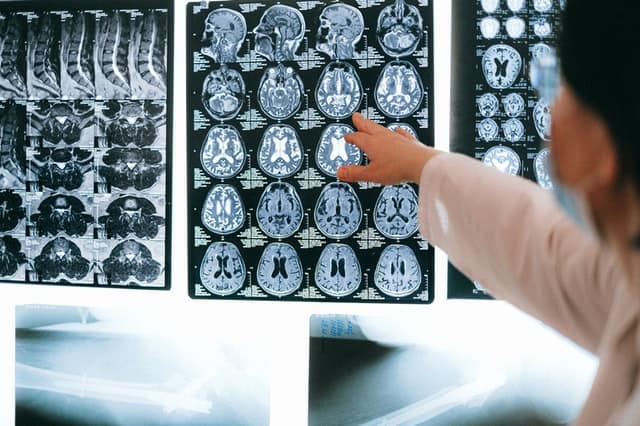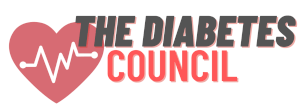
Diabetes affects nearly 6% of the world’s population, but its incidence is increasing every year. The prevalence of diabetes is projected to increase by 54% by 2030. It is estimated that there will be a 69% increase in the number of adults with type 2 diabetes in developing countries between 2010 and 2030, with the largest proportion of this increase occurring in people aged 40 to 60 years.
Contents
The corresponding increase in developed countries is estimated to be 20%, affecting mainly those over 60 years of age. The most likely explanations for these trends are aging, urbanization, and the adoption of Western lifestyles leading to obesity and sedentary lifestyles, as well as the extension of life for people with diabetes because of improved health care.
Thoracic imaging diagnostics and diabetes

As the name suggests, chest imaging diagnostics is a branch of medicine that deals with the detection of diseases using various imaging techniques of physiological and pathological changes occurring in the human body. Imaging diagnostics uses modern medical equipment, such as magnetic resonance imaging, computed tomography, or digital X-rays - they allow a detailed analysis of the patient’s internal organs while providing a non-invasive and completely painless examination.
Is recognized as a serious health problem. Ninety-nine percent of diabetics develop type 2 diabetes and 10% develop type 1 diabetes and other types of DM. The number of diabetics worldwide is expected to reach 380 million in the next 15 years.
Duration of diabetes matters in the pathogenesis of complications, but other factors that often coexist with type 2 diabetes, such as hypertension, obesity, and dyslipidemia, also contribute to the development of diabetic angiopathy. Microvascular complications include retinopathy, nephropathy, and neuropathy.
Macroangiopathy mainly affects the coronary arteries, carotid arteries, and lower extremity arteries. Eighty percent of deaths in the diabetic population are because of cardiovascular incidents.
Diabetes is considered equal to coronary heart disease (CHD). Other major manifestations of diabetic macroangiopathy are stroke and peripheral artery disease (PAD). Diabetic cardiomyopathy (DC) is another chronic complication that occurs independently of CHD and hypertension.
Increased susceptibility of patients with diabetes to infections completes the spectrum of major sequelae of diabetes. Serious complications of diabetes make it imperative that physicians be aware of screening guidelines so that patients can be diagnosed and treated early. The serious complications of diabetes make it imperative that physicians be aware of screening guidelines,
How can Xray help with diabetes?

Chest radiographs of 43 consecutive patients with diabetes were evaluated to determine their role as a routine examination of patients with diabetes. In 22 (51.2%) patients, chest radiographs were normal. The remaining 21 patients had 61 abnormal chest radiographs. Of these, 26 (42.6%) were significant abnormalities, while 35 (57.4%) were non-significant abnormalities. Among the former, 42.3% were because of cardiomegaly, while in the latter group, aortic distension was the major symptom.
Radiological abnormalities were more frequently observed in patients aged 40 years and older than in those younger than 40 years, in a ratio of 3:1. Chest radiographs confirmed the clinical diagnosis in 19 of 21 cases observed abnormalities. This study shows that routine chest radiography in diabetic patients is useful in clinically symptomatic patients and older diabetic patients over 40 years of age.
What does a radiologist need to know about a patient with diabetes?

According to the American Diabetes Association (ADA) and the World Health Organization (WHO).
Diabetes mellitus describes a multifaceted metabolic disorder characterized by chronic hyperglycemia with abnormalities in carbohydrate, fat, and protein metabolism resulting from an impaired study of insulin secretion and action, diagnosis, and classification of diabetes mellitus. And its complications. Chronic hyperglycemia is associated with damage, dysfunction, and failure of various organs, especially the eyes, kidneys, nerves, heart, and blood vessels.
The criteria that are currently used to diagnose diabetes recommended by the ADA in 2010, testing for diabetes should be done once within 3 years in every person over the age of 40. Also, regardless of age, this test should be performed annually in individuals in the following risk groups.
- overweight
- family environment (parents or siblings);
- low physical activity
- previous history of abnormal fasting blood glucose (> 100 mg/dl; > 5.6 mmol/l) or glucose intolerance;
- women with a history of gestational diabetes
- women who have given birth to a child weighing > 4 kg;
- with hypertension (≥ 140/90 mm Hg);
- with hyperlipidaemia [HDL cholesterol < 40 mg/dl (< 1.0 mmol/l) and/or triglycerides > 250 mg/dl (> 2.85 mmol/l)];
- women with polycystic ovary syndrome
- with cardiovascular disease.
Type 1 diabetes still has the highest prevalence among children, but this has changed in recent years as more children are becoming obese. A recent WHO report on diet, nutrition, and chronic disease prevention placed obesity at the top of the public health agenda as a major risk factor.
The emerging obesity epidemic in developing countries. The rising levels of obesity and type 2 diabetes in children are a cause for concern worldwide, unfortunately, childhood obesity like other factors can increase cardiovascular risk and premature death.
Pregnant women and the impact of diabetes

Lifestyle plays a key role in the development of type 2 DM. There is certainly a genetic predisposition to type 2 diabetes, but many risk factors are leading to a 21st-century epidemic. Risk factors are distinguished as non-modifiable and modifiable.
The first category includes age (persons older than 45 years), family history of type 2 diabetes, and ethnicity. The aim was to develop an accurate risk score for large population screening of persons at high risk of developing type 2 diabetes based on non-invasive measurement of major risk factors in German study populations.
A history of gestational diabetes is also an important risk factor because it increases the risk of women later developing type 2 diabetes. A set of risk factors for cardiovascular disease and type 2 diabetes that occur together more often than by chance is known as metabolic syndrome. Risk factors include elevated blood pressure, dyslipidemia (elevated triglycerides and decreased high-density lipoprotein cholesterol), elevated fasting glucose, and central obesity.
Fortunately, lifestyle modifications such as a healthy diet, physical activity, and breastfeeding affect approximately 4% of all pregnant women in the United States and account for 90% of all diabetes diagnosed during pregnancy. Also to the adverse pregnancy outcomes associated with this complication, a history of GDM predisposes women to the future development of type 2 diabetes mellitus (T2DM).
The incidence rates of GDM are increasing in the United States. An increasing number of women are now at increased risk for T2DM. Opportunities for diagnosis and prevention of T2DM in women with a history of GDM include early diagnosis through postpartum screening and implementation of diabetes prevention measures.
Obesity effects thru diabetes

There are modifiable risk factors such as obesity (BMI ≥ 30) and physical inactivity, which are considered to be the main non-genetic determinants of the disease, Chronic diabetic hyperglycemia is an achievement with achievement, dysfunction, and subsequent different systems, happened, inflammation, nerves, heart and measuring vessels.
In development. Include one from auto-comparison of pancreatic beta cells with subsequent insulin deficiency that follows, follows insulin resistance. The basis of the disorders of carbohydrate metabolism, fat metabolism, and, is the deficiency of insulin action on the maintenance of point.
Besides, previously diagnosed pre-diabetic conditions, which include IFG or IGT, can lead to type 2 diabetes. Finally, dyslipidemia is one of the major risk factors for cardiovascular disease in diabetes. Characteristics of diabetic dyslipidemia include high plasma triglyceride levels, low HDL cholesterol levels, and increased small dense particle LDL cholesterol levels.
The lipid changes associated with diabetes have been attributed to increased free fatty acid flux, secondary to insulin resistance. hypertension, The short- and medium-term effects on major cardiovascular events of the hypotensive treatment regimens studied were essentially comparable in patients with and without diabetes.
The differential effects of treatment regimens on intermediate renal outcomes, which were not evaluated in these reviews, may still provide a rationale for the use of specific drug classes in patients with diabetes, After concurrent changes for age, sex, race, education, obesity, family history of diabetes, level of physical activity other health behaviors, and comorbidities, hypertensive patients taking thiazide diuretics were no more likely to develop.
Later than hypertensive patients, and comorbid components of the metabolic syndrome, such as central obesity, increase the risk of developing diabetes in the future. So, you must take care of your health and your physical activity regardless of your age.
Should the insulin pump be disconnected before MRI and positron emission tomography?

Diabetic patients who use an insulin pumps should contact their treating physician or possibly a representative of the company that manufactures the equipment in unusual or questionable situations.
For the imaging studies mentioned in the question, manufacturers recommend not exposing the pump to magnetic radiation and X-rays (this includes X-rays, CT scans, and x-ray machines used at airports), as these can damage the pump motor, leading to unpredictable insulin delivery and up to and including exposure to a severe hypoglycemia.
The pump should be unhooked before the examination and left out of radiation range. Also, remove all metal punctures from the body before the study. Information on conditions of use for various Medtronic equipment (pumps, CGM systems).





